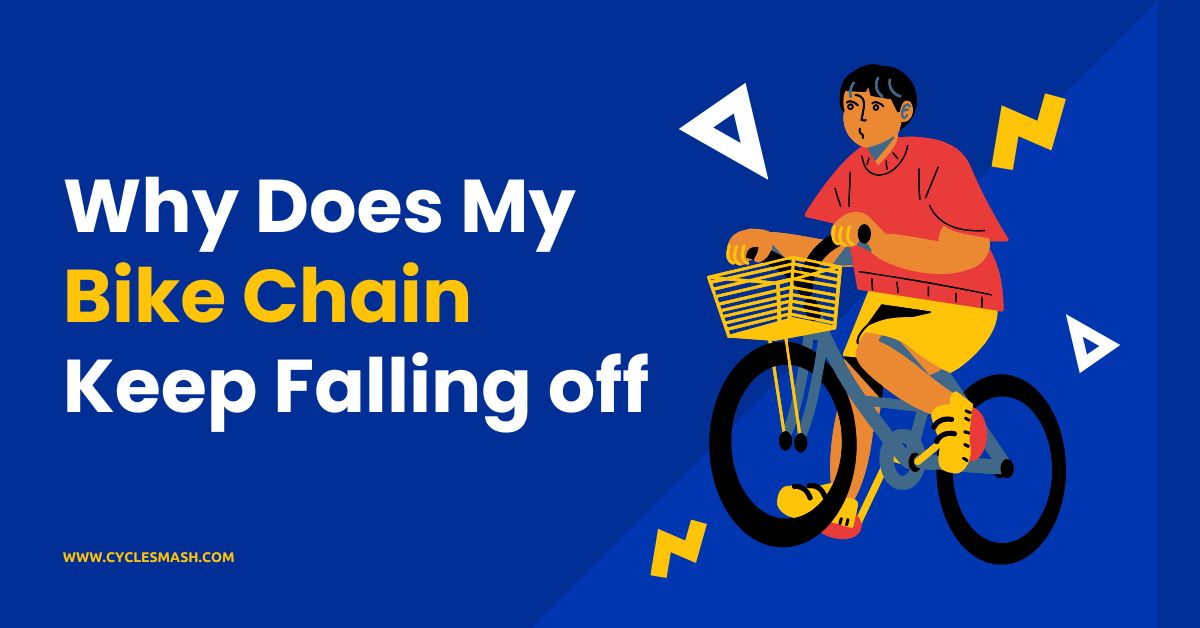Putting training wheels on a bike is simple and essential. It helps beginners learn to ride safely.
Learning to ride a bike is a milestone for many kids. Training wheels provide the needed support and balance for new riders. This guide will help you attach training wheels to a bike easily. Whether you’re a parent or guardian, you want to ensure the bike is safe and stable.
With the right tools and steps, you can set up the bike for your child’s first rides. Let’s get started with this straightforward process to make biking fun and safe for your little one.
Tools And Materials
Before you start attaching training wheels to a bike, gather all the necessary tools and materials. This step ensures a smooth process. It also helps you avoid unnecessary frustration. Below, you’ll find a guide on the essential tools and how to choose the right training wheels.
Essential Tools
To attach training wheels, you’ll need a few basic tools. Here is a list of what you need:
- Wrench Set: Different sizes for various nuts and bolts.
- Screwdrivers: Both flat-head and Phillips.
- Allen Keys: Various sizes.
- Socket Set: For tightening bolts securely.
- Lubricant: To ensure smooth operation of moving parts.
Choosing The Right Training Wheels
When picking training wheels, consider the following:
- Size: Ensure they match your bike’s wheel size.
- Material: Look for durable options like metal or high-quality plastic.
- Adjustability: Adjustable wheels grow with the rider’s skills.
- Compatibility: Check if they fit your bike’s frame and axle.
Using the right tools and materials ensures a secure and safe installation. This sets the foundation for a confident learning experience.
Preparing The Bike
Before adding training wheels, it’s crucial to prepare the bike. Proper preparation ensures safety and a smooth ride. Follow these steps to ready your bike for training wheels.
Inspecting The Bike
Begin by inspecting the bike to ensure it’s in good condition. Check these parts:
- Tires: Look for any punctures or wear.
- Brakes: Ensure they function properly.
- Chain: Verify it’s not rusty or loose.
- Seat: Make sure it’s firmly attached.
If any part appears damaged, fix it before proceeding. Safety first!
Cleaning And Lubricating
A clean bike performs better. Start by cleaning the bike thoroughly:
- Use a damp cloth to wipe down the frame.
- Clean the tires with soapy water.
- Remove any dirt or debris from the chain.
After cleaning, move on to lubricating the bike:
- Apply bike oil to the chain.
- Lubricate the brake levers.
- Check and oil any moving parts.
Proper lubrication reduces friction and extends the bike’s lifespan.
Attaching The Training Wheels
Attaching training wheels to a bike is a crucial step in helping a child learn to ride. This process involves a few key steps to ensure the wheels are secure and correctly positioned. Let’s dive into the details.
Positioning The Wheels
First, place the bike on a flat surface. This makes it easier to work on. Next, locate the rear wheel. This is where the training wheels will go. Hold one training wheel up to the side of the bike. Make sure it is level with the ground. The wheel should not be too high or too low. This ensures stability for the rider.
Securing The Wheels
Now, it is time to secure the training wheels. Start by removing the nuts from the rear axle. You will need a wrench for this. Place the training wheel bracket over the axle. The bracket should fit snugly. Replace the nuts on the axle and tighten them. Make sure the wheel is still level. Repeat this on the other side of the bike.
Finally, check the stability of the training wheels. Push the bike gently to ensure the wheels are secure. If they wobble, tighten the nuts further. Your bike is now ready for a young rider to practice safely.
Adjusting The Training Wheels
Adjusting training wheels correctly is crucial for your child’s safety. Proper adjustments will ensure a smooth and balanced ride. Let’s walk through the steps to make sure the training wheels are set up right.
Balancing The Bike
First, make sure the bike is on a flat surface. This helps in getting accurate adjustments. Use a level to check if the bike is upright.
- Stand behind the bike.
- Hold the seat and handlebars.
- Check if the bike leans to one side.
If the bike leans, adjust the training wheels to balance it. This prevents tipping over and ensures a stable ride.
Ensuring Stability
Stability is key for a confident ride. Adjust the training wheels so they touch the ground evenly. Follow these steps:
- Loosen the nuts on the training wheels using a wrench.
- Position the wheels so both touch the ground.
- Tighten the nuts to secure the wheels in place.
Check the stability by gently pushing the bike forward. If the bike wobbles, re-adjust the wheels until stable.
Ensuring stability will help your child feel secure and confident. Properly adjusted training wheels lead to a smoother ride and quicker learning.
Safety Checks
Ensuring your child’s bike is safe before attaching training wheels is crucial. This step prevents accidents and ensures a smoother riding experience. Follow these safety checks to make sure everything is in place.
Tightness Of Wheels
First, check the tightness of the wheels. Loose wheels can cause instability. Use a wrench to tighten any loose bolts. Make sure the wheels spin freely without wobbling. Secure wheels reduce the risk of falls.
| Check | Action |
|---|---|
| Wheel Bolts | Tighten with a wrench |
| Wheel Spin | Ensure it spins freely |
| Wobble | Check for stability |
Bike Stability
Next, ensure the bike’s stability. The bike should stand upright without leaning to one side. Place the bike on a flat surface. If it wobbles, adjust the training wheels. Proper stability helps in learning balance.
- Place the bike on a flat surface.
- Check if the bike stands upright.
- Adjust the training wheels if needed.
A stable bike builds confidence in young riders. Perform these safety checks regularly. They ensure a safe and enjoyable riding experience.
Tips For First Ride
Starting the first ride with training wheels can be exciting and challenging. Ensuring your child feels safe and confident is crucial. Here are some tips to make the first ride enjoyable and smooth.
Supervising The Rider
Stay close to your child during the first few rides. Keep a watchful eye on their movements and reactions. This helps you offer immediate support if they need it. Walk or jog alongside the bike to provide comfort and reassurance.
Encouraging Confidence
Give positive feedback to build your child’s confidence. Praise their efforts, no matter how small. Remind them that practice makes perfect. Encourage them to keep trying, even if they wobble or fall. Your support can boost their self-esteem and determination.
Removing Training Wheels
Removing training wheels is an exciting milestone for any young rider. It signifies growth and the readiness to ride independently. The process can be smooth and rewarding, with the right approach and preparation.
Signs Of Readiness
Before removing the training wheels, ensure your child is ready. Look for signs that they have developed balance and coordination. They should be comfortable riding with training wheels and show interest in riding without them. Confidence is key. If they often ride without leaning heavily on the training wheels, they are likely ready.
Step-by-step Removal
Follow these steps to remove the training wheels safely and efficiently:
First, gather the necessary tools. You will need a wrench or a spanner.
Next, place the bike on a flat surface. This ensures stability during the process.
Use the wrench to loosen the bolts holding the training wheels. Turn the bolts counterclockwise to remove them.
Once the bolts are loose, gently slide the training wheels off the bike. Keep the bolts and wheels in a safe place, in case you need them again.
Finally, check the bike to ensure everything is secure. Tighten any loose bolts and make sure the bike is safe for riding.
Encourage your child to take small steps in learning to balance without training wheels. Practice in a safe, open area and provide support as they gain confidence.
Frequently Asked Questions
How Do You Install Training Wheels?
To install training wheels, attach them to the rear axle of the bike. Ensure they’re level with the ground. Tighten the bolts securely.
Are Training Wheels Universal?
Most training wheels are universal and fit various bike sizes. However, always check compatibility with your specific bike model.
What Tools Are Needed For Installation?
You typically need a wrench, screwdriver, and possibly pliers. These tools help secure the training wheels properly.
How High Should Training Wheels Be?
Training wheels should be slightly raised from the ground. This setup helps balance while still providing support.
Conclusion
Getting training wheels on a bike is easy with these steps. Follow the guide, and you’ll have them installed quickly. Kids will soon ride with confidence and joy. Remember to check the wheels regularly for safety. Enjoy your family biking adventures!



Leave a Reply